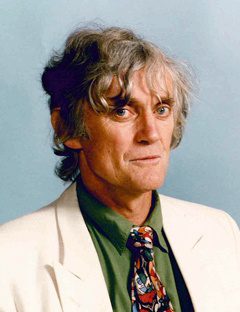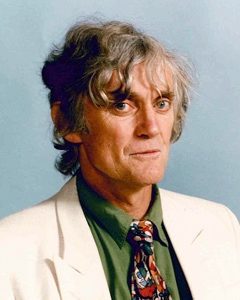Vale: John Chappell FAA (1940 – 2018)

Professor John Chappell FAA 1940 – 2018 (Photo Source: Australian Academy of Science)
It is with great sadness I heard the news last week that my old friend and colleague, John Chappell, passed away. We are of a similar vintage and shared many things in common and times together. He inspired me as he did so many not just in academic terms but as an incredible person; he is the only person I have known who could be called a “polymath”.
John was a physical geographer, a geomorphologist, a Quaternary geologist, a teacher par excellence, a sculptor, a painter, a musician, and a scholar of so many fields. He knew so much. From the first time we met I was aware of his extraordinary abilities but as time went on that admiration grew and grew. It is hard to capture all that he accomplished, but a few examples must suffice.
First his PhD on the elevated coral reefs of the Huon Peninsula (ANU, 1973). I treasure my copy. This followed an earlier study from his home base in New Zealand on the Quaternary geology on coastal formations near Auckland as part of his MSc work. These field studies demonstrated enormous intellectual capacity, physical courage and insights which help to establish his career in Quaternary science. Don Wright and I visited the Huon with him in 1977; it was one of the most stimulating field trips of my life. John’s research here paved the way for a new examination of the Quaternary climate and sea level record on land and in the ocean.
Second, his powers to innovate and use new technologies. There is no doubt that opportunities to apply new dating techniques made it possible for John to build chronologies at a variety of time scales. He was magic in the way he developed computer models to simulate landform changes, again at different temporal and spatial scales, and tested against field data. And he was inventive; an example was his work with Ian Eliot in constructing a manifold and pumping system on the beach at Durras to test the effect of lowering water tables on beach profiles.
Third, he had great success in collaborating with many other scientists from a variety of disciplines and locations. A look at his publication list right up to the present demonstrates that point. So many respected his abilities to work on problems ranging from global to the local. It was this capacity to stimulate and work with others that define his vast array of publications across so many fields. I too was a recipient of his generosity in exchange of ideas, in field studies and in writing up the results of coastal research where we had common interests.
John was an inspiring teacher. In the early 70s I sat in a class room at ANU where he attempted to teach a small group of us some mathematics that he thought we needed to know. It was tough going for most of us. But he persisted and I still have the notes from those sessions as a reminder of his capacity to explain complex issues. On field trips as well as in the class room his engaging personality was always evident. I would like to quote from one of his first and very eminent PhD students of the 1970s, Ian Eliot:
“It wasn’t just what John taught me about geomorphology that was important to me, although John taught me to look at my beloved beaches in new ways. Perhaps more significantly it was the breadth of his vision, his understanding of culture, and deep appreciation of the value of life on this planet which stays with me. As John has said to me our collegiate times together were great times; full of fun, laughter and hard work”.
Others will no doubt comment on his many scientific contributions. He published in the most prestigious journals. You can easily check out this out on the internet. In coastal research we are not just indebted to those studies from the Huon. His work in neo-tectonics and hydroisostasy helped pave the way for a better understanding of relative sea level change at regional scales. His great paper in Nature in 1974 on sea levels, oxygen isotope variations and orbital perturbations was an incredible piece of work and led the way for years of productive collaboration with Nick Shackleton of Cambridge. He was prepared to go back and revise this work based on new observations, collaborators and techniques of dating. Then he entered into a grand period of linking this coastal-ocean-glacial work to terrestrial landscape changes with another set of collaborators. All truly remarkable and it was for all this he was honoured as a Fellow of the Australian Academy of Science (FAA).
John is truly the father of Quaternary research in Australia. He will be forever remembered by those he worked with and were his students, and we can only hope that new researchers will be prepared to read his papers and appreciate just how great a scientist he was.
Bruce Thom
Words by Prof Bruce Thom. Please respect the author’s thoughts and reference appropriately: (c) ACS, 2018, posted 7 October 2018, for correspondence about this blog post please email austcoastsoc@gmail.com
#121


 Coasts and Legal Systems
Coasts and Legal Systems